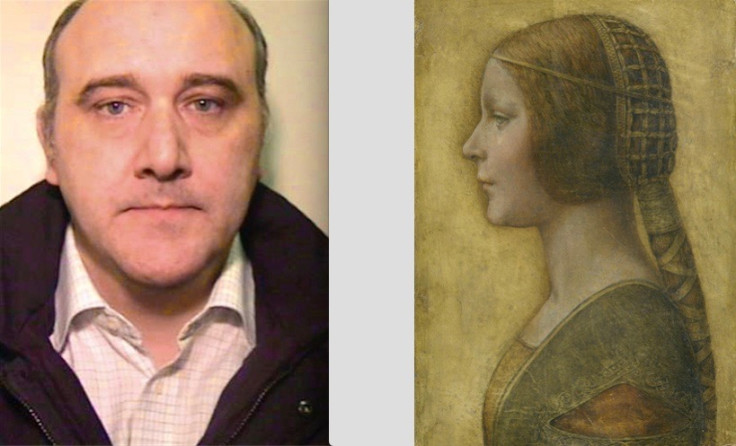Scientists claim a forger's 'fake' Leonardo da Vinci painting is genuine

A claim by Britain's most prolific art forger that he based a fake Leonardo da Vinci painting on a shop girl named "Sally" appears to have been contradicted by new scientific evidence. Shaun Greenhalgh said he drew La Bella Principessa in 1978.
In his book, A Forger's Tale he claims that he dug up iron-rich clay and charcoal from ancient trees to paint the work on an old council document dated 1587, which he mounted on a Victorian school desk lid. While the profile portrait of a young woman wearing a ponytail plaited with ribbons is produced in a style that places her in the court of Ludovico Sforza, the duke of Milan, in the 1490s, Greenhalgh claims that he painted it when he "worked at the Co-op".
"I drew this picture in 1978," wrote the self-taught artist. "The 'sitter' was based on a girl called Sally who worked on the checkouts. Despite her humble position, she was a bossy little bugger and very self-important."
But a two-year study of the painting by an art analysis laboratory in Paris concluded that it must be at least 250 years old. The rate of radioactive decay in lead atoms found in the chalk pigment put the artist at least in the 17th century, Pascal Cotte, a founder of Lumiere Technology, told The Sunday Times.
Greenhalgh says otherwise and the art historian Waldemar Januszczak, who wrote the foreword to his memoir, has said these natural ingredients could fool a radioisotope test.
Eight years ago Greenhalgh, now 54, was jailed for four years and eight months after earning £850,000 from making fake art treasures with the help of his parents in their terraced house in Bolton, Lancashire.
His biggest triumph was the £440,000 sale of a statue that he claimed was 3,300 years old and represented the Princess Amarna, daughter of Pharaoh Akhenaten and Queen Nefertiti.
It had, in fact, been "knocked up" in a garden shed. But he and his parents fooled the museum and art gallery of the town in Greater Manchester, which bought the piece and put it on display.
His father, George, 84, and mother, Olive, 83, admitted conspiring to defraud art institutions between June 1989 and March 2006. She was given a suspended jail term of 12 months, while her husband was given a two-year suspended sentence.
Their cottage industry did not confine itself to Egyptology, but produced artifacts ranging from a Roman plate to a goose supposedly sculpted by Barbara Hepworth, accruing nearly a million pounds in the process.
Following Shaun Greenhalgh's release early in 2010, he launched a website selling his artworks. They comprise works which he describes as "examples of my old style of work… 'fakes'", signed and sold as works by him, as well as sculptures in his own style.
© Copyright IBTimes 2025. All rights reserved.



















